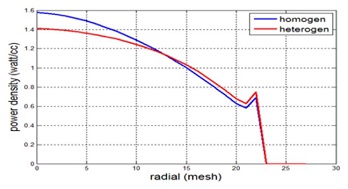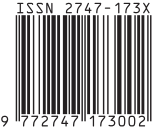Information For Authors
GUIDELINES FOR AUTHORS
Manuscript Submission
By submitting a manuscript authors warrant that their contribution to the Journal CERIMRE is their original work (either computational or experimental work), that it has not been published before, that it is not under consideration for publication elsewhere.
Authors are exclusively responsible for the contents of their submissions, the validity of the results. Authors wishing to include figures or text passages that have already been published elsewhere are required to obtain permission from the copyright holder(s) and to include evidence that such permission has been granted when submitting their papers. Any material received without such evidence will be assumed to originate from the authors. Whenever there are complaints related to the authenticity of images or tables from other authors (proven by valid data) that have been published elsewhere, the editor has the right to cancel the publication of the problematic article without permission from the author. Authors must make sure that all only contributors who have significantly contributed to the submission are listed as authors.
Manuscript should be sent via online submission:
https://jurnal.unej.ac.id/index.php/CERiMRE/onlinesubmission
Article Publishing Cost
At this time, the journal CERIMRE does not burden authors with publication fees.
Aims and Scopes
Articles published in the CERIMRE journal are articles that contain research results using either COMPUTATIONAL METHODS or EXPERIMENTAL METHODS or both of them, specifically for research topics related to new potential materials and renewable energy resources. Using computational methods (Micromagnetic, DFT, MD molecular dynamics, CFD, Monte Carlo, FEM, transport neutron, etc) and/or standard experimental tools and analysis (FTIR, XRD, SEM, EDAX, etc) to develop potential applications of new materials and renewable energy resources.
Results of material research can include the prediction of properties of new materials: electronics materials, photonics materials, magnetic materials, spintronics materials, optoelectronics materials, nuclear materials, thermoelectric materials, nuclear waste material, batteries, corroded material, superconductor, composite materials, and other materials.
Exploring new sources or design of renewable energy resources as nuclear power plants, solar cell, fuel cells, biomass, thermo-electrics generators, nuclear batteries, nuclear radiation, thermal hydraulics, and other energy system.
Language
All articles should be written in clear and concise English. Has passed a language checking software (for example the Grammarly software, see www.grammarly.com) or taking the advantage of editing services assistance (for example the Wiley editing service, see https://wileyeditingservices.com/)
Writing Structure
Please, use the following structure for your research article ( for ease of writing, use the CERIMRE journal template )
a. Title
The title should be brief and informative. The title should contain the research topic, activities carried out related to the research and the methods used. For the article presented in a scientific meeting should be informed in a footnote.
b. Authors
Author’ names should appear immediately below the title, followed by Authors’ affiliations and addresses. The email address of the corresponding author should be below the addresses.
c. Abstract
A good abstract structure starts from research topics, research gaps, research objectives, research methods, result and their meaning. Abstract should be no longer than 500 words, giving a brief summary of the content and conclusions. Do not include artwork, tables, elaborate equations or references. Use arial 10 for abstract.
d. Keywords
List the keywords covered in your paper. Keyword must represent the contents of articles. These keywords will also be used by the publisher to produce a keyword index. Five (5) keywords should be provided for indexing and abstracting.
e. Introduction
This section needs to clearly describe:
- description of the research topic,
- state of the art of research topics that are directed to research gaps/research problems that will be answered through research conducted. This section should be filled in by references from quality scientific journals. At least one of the articles cited in the introduction section should be an article of the last year. The insight and quality of the journal that is used as a reference greatly determines the level of novelty of study.
- declaration of research objectives. This is of course to answer the research gap that was found when carrying out the state of the art of the research topic,
- A brief explanation of the methods used to arrive at the research objectives.
f. Theoretical Background
The theory section should be sufficiently broad and deep, not repeating the previous content discussed in the Introduction and serving as the basis for the research to be carried out.
g. Materials and Methods
Provide sufficient details to allow the work to be reproduced. Methods already published should be indicated by a reference. Only relevant modifications should be described.
h. Results and Discussion
Results should be clear and concise. Discussion should explore the significance of the results of the work, not repeat them. A combined Results and Discussion section is often appropriate. This section does not explain methodology or theory anymore. This section immediately describes the results obtained and their analysis. It should also be remembered that important findings need to be given deeper emphasis/discussion as a comparison (citation of related articles) so that the strength of the research is visible. And of course this is still related to the purpose of the research.
i. Conclusions
The conclusion section is required. It contains the main points of the article. It should not replicate the abstract, but might elaborate the significant results, possible applications and extensions of the work. Conclusions are written in paragraph style, not point by point.
j. Acknowledgment
Acknowledgment is recommended to be given to persons or organizations helping the authors in many ways. Sponsor and financial support acknowledgments may be placed in this section. Use the singular heading even if you have many acknowledgments.
k. References
Citation in text
Please ensure that every reference cited in the text is also present in the reference list (and vice versa). Any references should not be cited in the abstract. References cited in articles must be articles that have been published (including online first articles), not the result of personal communication or others. All cited references must appear in the references along with the article link or DOI.
Web References
The use of web references in the article should be severely limited. If using a web reference, please include the date of the web access.
Reference List
In writing references, it is highly recommended to use reference management software such as Mendeley (choose IEEE style) to avoid writing discrepancies.
Journal abbreviations source
Journal names should be abbreviated according to the List of Title Word Abbreviations.
Journals:
[1] H. Xia, J. Wu, C. Srinivasakannan, J. Peng, and L. Zhang, “Effect of activating agent on the preparation of bamboo-based high surface area activated carbon by microwave heating,†High Temp. Mater. Process., vol. 35, no. 6, pp. 535–541, 2016, doi: 10.1515/htmp-2014-0228.
Books:
[2] Y. Mishing, 2004, Diffusion Processes in Advanced Technological Materials, edited by D. Gupta Noyes Publications/William Andrew Publishing, Norwich, New York.
Chapter in Book:
[3] G. Henkelman, G.Jhonesson and H. Jónsson, 2000, Theoretical Methods in Condensed Phase Chemistry, edited by S.D. Schwartz, volume 5 of Progress in Theoretical Chemistry and Physics, chapter, 10, Kluwer Academic Publishers.
Website:
[4] International Energy Agency, 2018, World Energy Outlook 2018, Executive Summary on http://www.iea.org/weo/ (accessed on August 16, 2018)
Notes
Organization of the Text
Section Headings. The section headings are in boldface capital and lowercase letters. Second level headings are typed as part of the succeeding paragraph (like the subsection heading of this paragraph).
Page Numbers. Do not print page numbers: Please number each sheet toward the middle near the bottom (outside the typing area) with a soft pencil.
Tables. Tables (refer with: Table 1, Table 2, ...) should be presented as part of the text, but in such a way as to avoid confusion with the text. A descriptive title should be placed above each table. The caption should be self-contained and placed below or beside the table. Units in tables should be given in square brackets [meV]. If square brackets are not available, use curly {meV} or standard brackets (meV). See the example for Table 1. Use Arial 10 for text in the table
Table 1. Diffusion Coefficient of Material
|
No. |
Element |
Temperature [K] |
Diffusion Coefficient [m2/s] |
|
|
|
|
|
|
|
|
|
|
|
|
|
|
|
|
|
|
|
|
Special Signs or symbol. For example: α,γ, μ, Ω, (), ≥, ±, â—, Γ, {110} should always be written in with the fonts Arial.
Figures. Figures (refer with: Fig. 1, Fig. 2, …) also should be presented as part of the text, leaving enough space so that the caption will not be confused with the text. The caption should be self-contained and placed below or beside the figure. Generally, only original drawings or photographic reproductions are acceptable. Only very good photocopies are acceptable. Utmost care must be taken to insert the figures in correct alignment with the text . Half-tone pictures should be in the form of glossy prints. If possible, please include your figures as graphic images in the electronic version. For best quality the pictures should have a resolution of 300 dpi (dots per inch).
Color figures are welcome for the online version of the journal. Generally, these figures will be reduced to black and white for the print version. The author should indicate on the checklist if he wishes to have them printed in full color and make the necessary payments in advance.

Figure 1. Comparation power density value of homogeneous and heterogeneous fuel core configuration
Equations. Equations (refer with: Eq. 1, Eq. 2, ...) should be indented 5 mm (0.2"). There should be one line of space above the equation and one line of space below it before the text continues. The equations have to be numbered sequentially, and the number put in parentheses at the right-hand edge of the text. Equations should be punctuated as if they were an ordinary part of the text. Punctuation appears after the equation but before the equation number, e.g.
c2 = a2 + b2 (1)
Literature References. References are cited in the text just by square brackets [1]. (If square brackets are not available, slashes may be used instead, e.g. /2/.) Two or more references at a time may be put in one set of brackets [3,4]. The references are to be numbered in the order in which they are cited in the text and are to be listed at the end of the contribution under a heading References , see our example below








